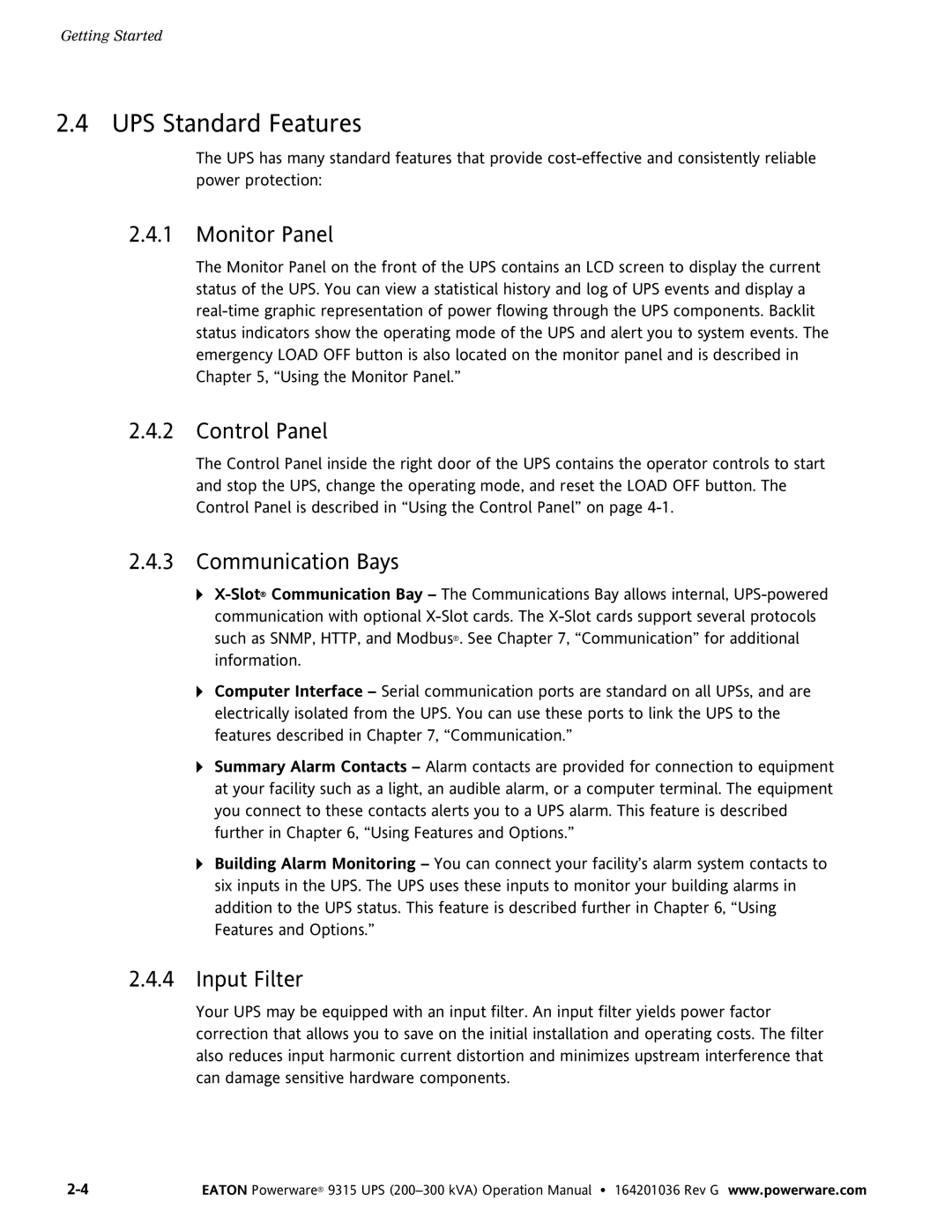Getting Started
2.4 UPS Standard Features
The UPS has many standard features that provide
2.4.1 Monitor Panel
The Monitor Panel on the front of the UPS contains an LCD screen to display the current status of the UPS. You can view a statistical history and log of UPS events and display a
2.4.2 Control Panel
The Control Panel inside the right door of the UPS contains the operator controls to start and stop the UPS, change the operating mode, and reset the LOAD OFF button. The Control Panel is described in
2.4.3 Communication Bays
AX−Slot® Communication Bay – The Communications Bay allows internal, UPS−powered communication with optional X−Slot cards. The X−Slot cards support several protocols such as SNMP, HTTP, and Modbus®. See Chapter 7,
information.
AComputer Interface – Serial communication ports are standard on all UPSs, and are electrically isolated from the UPS. You can use these ports to link the UPS to the features described in Chapter 7,
ASummary Alarm Contacts – Alarm contacts are provided for connection to equipment at your facility such as a light, an audible alarm, or a computer terminal. The equipment you connect to these contacts alerts you to a UPS alarm. This feature is described further in Chapter 6,
ABuilding Alarm Monitoring – You can connect your facility’s alarm system contacts to six inputs in the UPS. The UPS uses these inputs to monitor your building alarms in addition to the UPS status. This feature is described further in Chapter 6,
Features and Options."
2.4.4Input Filter
Your UPS may be equipped with an input filter. An input filter yields power factor correction that allows you to save on the initial installation and operating costs. The filter also reduces input harmonic current distortion and minimizes upstream interference that can damage sensitive hardware components.
2−4 | EATON Powerware® 9315 UPS |
